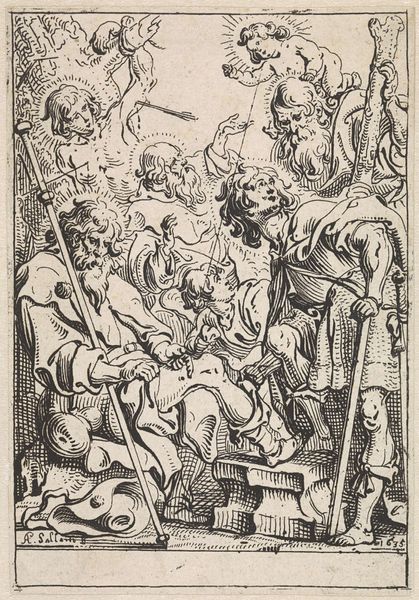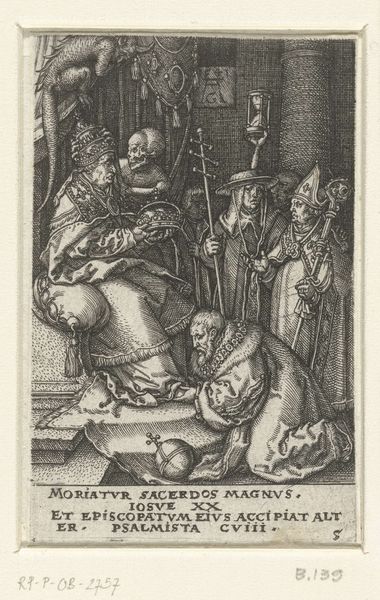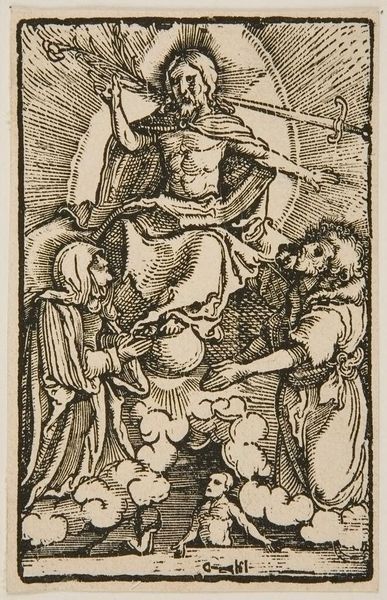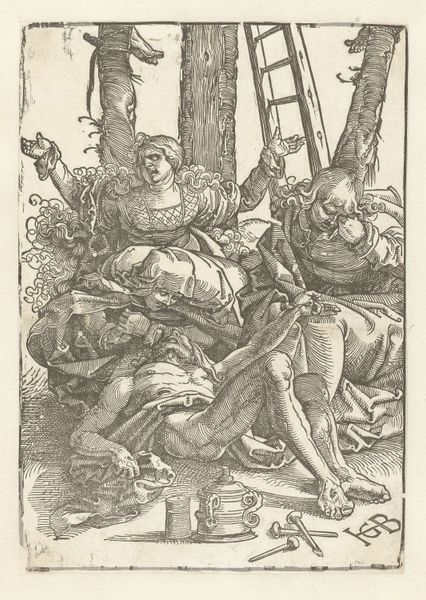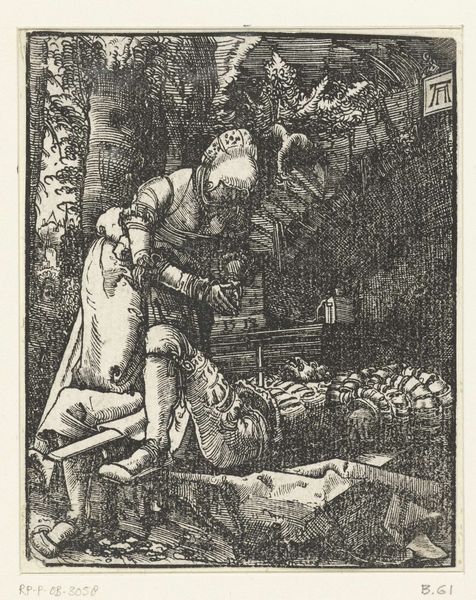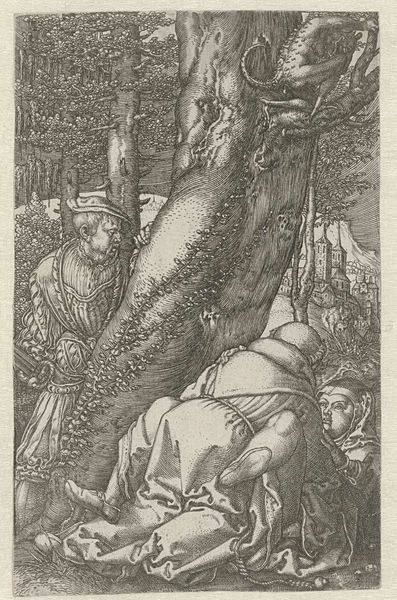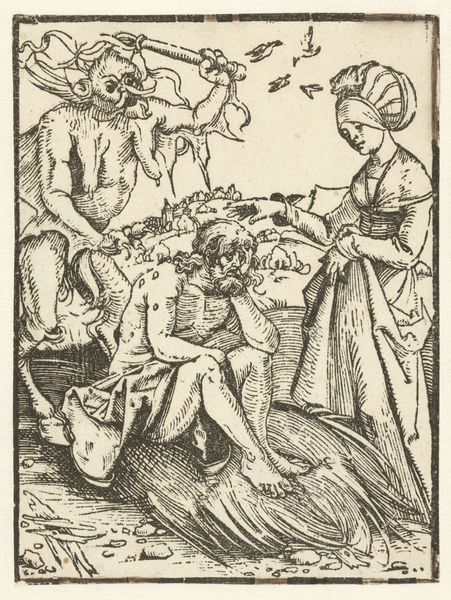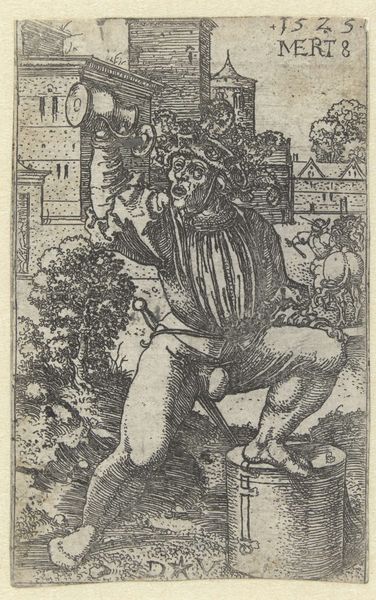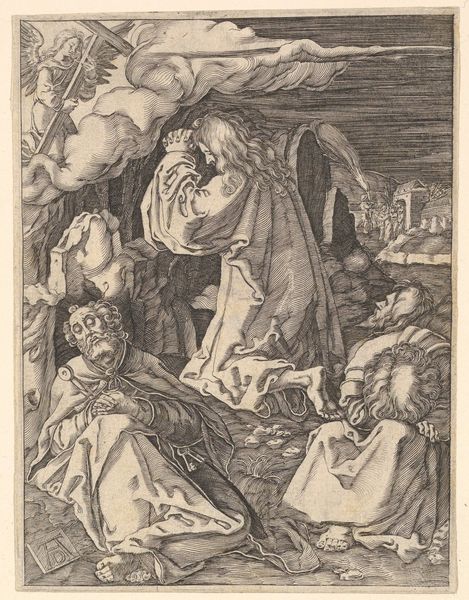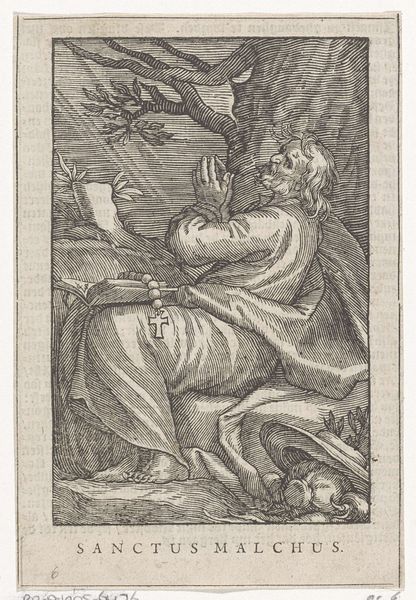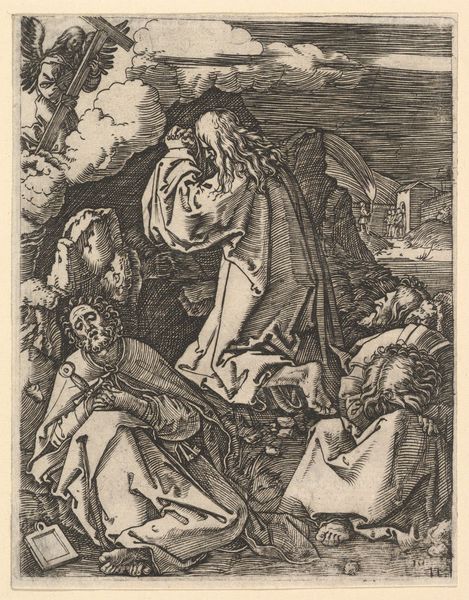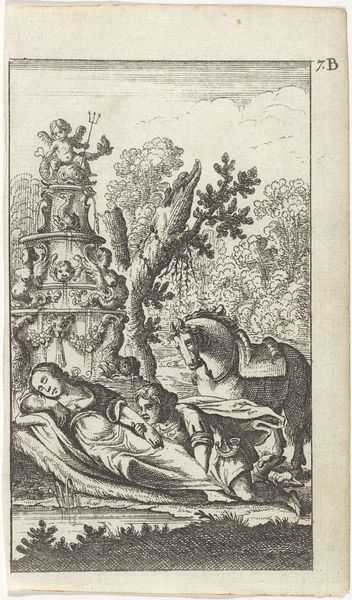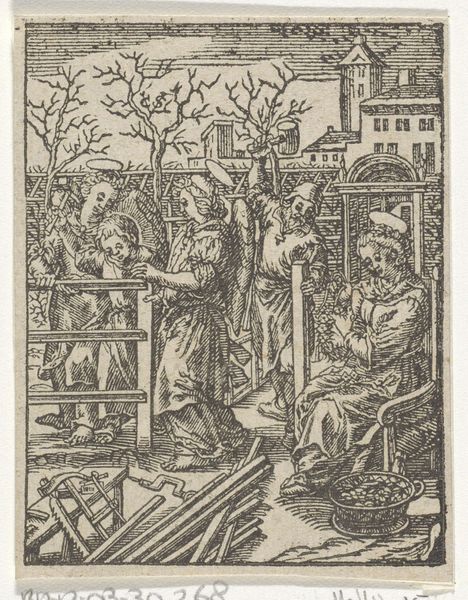
drawing, print, ink, woodcut
#
drawing
#
narrative-art
#
pen drawing
# print
#
pen illustration
#
pen sketch
#
figuration
#
ink
#
woodcut
#
history-painting
#
northern-renaissance
Dimensions: height 118 mm, width 97 mm
Copyright: Rijks Museum: Open Domain
Curator: This is Hans Burgkmair's "Simson en Delila," a work existing as both a pen drawing and woodcut print, dating sometime between 1483 and 1531. What are your initial thoughts? Editor: A palpable sense of vulnerability. Samson, literally disarmed and shorn, rendered powerless. The stark black and white adds to the drama; it's a very emotional scene despite the distance of centuries. Curator: The choice to depict this particular moment of betrayal is interesting when considered through a feminist lens. Delilah's agency is highlighted, and her role can be examined beyond simple villainy. Was she coerced, manipulated, or acting out of genuine self-preservation within a patriarchal structure? These are vital questions. Editor: Absolutely, and let's consider the symbolic weight of hair throughout cultures – its connection to strength, virility, even magic. Samson’s hair isn't just hair; it’s a visual representation of his covenant with God, and Delilah's act, the shaving, becomes an almost ritualistic defilement, steeped in ancient anxieties about emasculation. Curator: And considering the era, these images served a didactic function. How did they reinforce existing power structures, or perhaps subtly challenge them? This image participates in centuries of demonizing women by representing them as duplicitous, treacherous. We can ask why such images remained resonant, how the social function changes or persists. Editor: That's true, the trope continues to haunt visual narratives to the present day. And the objects placed near the foreground-- the pitcher, and the plate --what stories might they tell about the betrayal? Are those remnants of the last drink they shared? A memory of domestic trust destroyed by deception? These familiar elements intensify the personal nature of the fall. Curator: By questioning these long-held assumptions about gender roles, betrayal, and power, Burgkmair’s work—and how it has been understood-- reveals a lot about social relations. Editor: Indeed, art becomes a kind of mirror reflecting both our past and our ongoing struggles. The symbolic force behind depictions like this continue to speak to audiences today, so analyzing how their narrative resonates through history provides insight into present struggles.
Comments
No comments
Be the first to comment and join the conversation on the ultimate creative platform.
